INTERVIEW WITH GLORIYA TALEBI
by Rebecka Öhrström Kann 01/09/2024
Gloriya Talebi is a lens-based artist working in Gothenburg, Sweden, whose work explores intergenerational formations of memory and the power of nostalgia. In her project Bet She Looks Like You (2023), Talebi inserts herself into images of her mother, collapsing temporalities to reveal the archive as a dynamic place of self-reflection and future rearticulations of diasporic identities. Imbued with magic and an eye for humor, Talebi’s layered constellations linger in the potency of nostalgia as a tool for working through the weight of unlived experiences and collective memory as a site in constant formation. We spoke about her love for the movie Eternal Sunshine of the Spotless Mind, the joy of looking through your family’s photo album and Talebi’s interest in working outside the frame.

Rebecka Öhrstrom Kann: How would you describe your work to someone who has never seen it?
Gloriya Talebi: This is always so fucking hard. I would still describe the work I'm doing as, in one way or another, is usually very connected to identity, which shows up in many different ways. I also usually work very intuitively and based on feelings or memories that are connected to me, but also my culture. Both the Persian culture and the more western culture, but lately, I've been working a lot on my Persian identity. I think it began when I started studying art, that experience was a way in for me to be able to find myself in how I identify myself. But otherwise, I would probably describe my work as dreamy with many layers. And then, when I work on an installation, I usually do it more three-dimensionally, or I do some kind of decoration to make it something more than just an image on the wall. Photos are my foundation, but I like to work with mixed media and use everything that exists.
![From Soghati, Gloriya Talebi, 2022. Image courtesy of the artist.]()
RÖK: How did you start creating? What specifically drew you to photography as a medium?
GT: I think as a kid, I was so curious to try everything, I've done ballet, tried football, keyboards and played guitar…I've always wanted to do something that's more creative, but nothing really clicked like when I was doing something visually creative. I always liked to paint when I was little. One of my uncles also used to take a lot of photos when my family gathered, so I always got to take pictures with his camera and take family photos when my family was gathered. I think that contributed me feeling that this is something I enjoy doing. I didn't think much more about it at the time than that it was fun to take some photos, but then there was the whole Tumblr era when you would photograph your life kind of aesthetically. So I still think all this has contributed to me, in one way or another, feeling that photography is my thing. But I also think that I have such a need to create and that photography has become the medium for me in that... I don't even really know exactly how, but that's where I got stuck. And now I've also studied photography for like 5 years soon, so it's just something I'm drawn to because there's so much you can do with photography.
Gloriya Talebi: This is always so fucking hard. I would still describe the work I'm doing as, in one way or another, is usually very connected to identity, which shows up in many different ways. I also usually work very intuitively and based on feelings or memories that are connected to me, but also my culture. Both the Persian culture and the more western culture, but lately, I've been working a lot on my Persian identity. I think it began when I started studying art, that experience was a way in for me to be able to find myself in how I identify myself. But otherwise, I would probably describe my work as dreamy with many layers. And then, when I work on an installation, I usually do it more three-dimensionally, or I do some kind of decoration to make it something more than just an image on the wall. Photos are my foundation, but I like to work with mixed media and use everything that exists.

RÖK: How did you start creating? What specifically drew you to photography as a medium?
GT: I think as a kid, I was so curious to try everything, I've done ballet, tried football, keyboards and played guitar…I've always wanted to do something that's more creative, but nothing really clicked like when I was doing something visually creative. I always liked to paint when I was little. One of my uncles also used to take a lot of photos when my family gathered, so I always got to take pictures with his camera and take family photos when my family was gathered. I think that contributed me feeling that this is something I enjoy doing. I didn't think much more about it at the time than that it was fun to take some photos, but then there was the whole Tumblr era when you would photograph your life kind of aesthetically. So I still think all this has contributed to me, in one way or another, feeling that photography is my thing. But I also think that I have such a need to create and that photography has become the medium for me in that... I don't even really know exactly how, but that's where I got stuck. And now I've also studied photography for like 5 years soon, so it's just something I'm drawn to because there's so much you can do with photography.

RÖK: You can really see that curiosity in your photos, I think, in how they expand into the room beyond the frame. I'm also interested in your activation of the archive and especially how you work with your own family archive (as well as others). When did you start using the archive in your creative practice (or has it always been there)? Do you feel that your relationship with the archive has changed after using it in your work?
GT: I think I've always been obsessed with looking at our family archive and all the photos that we have from before I was born, after I was born, etc, but I didn't start working with my own archive until a few years ago. And it was mostly because I thought I looked so much like my mom when she was my age, and I think it triggered something in my head. Like it felt like it was me in those pictures, but in another world or in another time. Growing up, people have always said that I look so much like my mom, but I've never seen it until now. When I looked at those photographs, I realized how similar we are in our appearance, everything from the hairstyle, this short hair...everything is incredibly alike, and it felt like I saw myself. So, when I work with the archival images from my mother, it's mainly to create some new narrative or use the image as a basis to explore something in my own head, I think. The carpet that I made where I cloned her face was part of a bigger project connected to ideas about family generations, and I wanted to work with making several different layers to symbolize it in one way or another and make it a little comical. I think there's always some minor reference to something a bit comical in what I'm creating.
GT: I think I've always been obsessed with looking at our family archive and all the photos that we have from before I was born, after I was born, etc, but I didn't start working with my own archive until a few years ago. And it was mostly because I thought I looked so much like my mom when she was my age, and I think it triggered something in my head. Like it felt like it was me in those pictures, but in another world or in another time. Growing up, people have always said that I look so much like my mom, but I've never seen it until now. When I looked at those photographs, I realized how similar we are in our appearance, everything from the hairstyle, this short hair...everything is incredibly alike, and it felt like I saw myself. So, when I work with the archival images from my mother, it's mainly to create some new narrative or use the image as a basis to explore something in my own head, I think. The carpet that I made where I cloned her face was part of a bigger project connected to ideas about family generations, and I wanted to work with making several different layers to symbolize it in one way or another and make it a little comical. I think there's always some minor reference to something a bit comical in what I'm creating.
Now I’m also working on a private project where I edit archival photos of myself from my childhood where I put myself in a world that is a little more dreamlike and fantasy-like, a bit like the mindset you have when you are a child. Which I think is exciting. I think it’s also kind of a lack of absence of being a kid as well, and that everything that I like now, I also liked when I was a child. So it’s also about nostalgia, in a sense. Yet, all that has emerged in retrospect when I‘ve looked through the archive photos. But I also have an obsession with staying in the past, so I think that's kind of what it's all about, and I think a lot of people can identify with that as well. That's why it can be exciting because you can associate these images with different things.
![From Soghati, Gloriya Talebi, 2022. Image courtesy of the artist.]()
RÖK: Especially when you activate images that hold personal significance and have a history with you.
GT: I think it also comes from the fact that I've always been obsessed with wanting to take a perfect picture. Like when you do a full set-up and really think about what this picture is supposed to represent, but then I can look at old family pictures where someone has taken a really fast picture with a poor camera, and it's like the world's best picture. I think there's something ironic in that I see so much good material in old family photos, and then when I take my own pictures myself, I’m like, "This is shit?” [laughs] But then I've spent so much time, so much energy on making those images, and I'm still not satisfied. So, I also think it's this connection to memories or a feeling of nostalgia and that even if it's the blurriest, blurriest picture, it still means so much.
![From Soghati, Gloriya Talebi, 2022. Image courtesy of the artist.]()
RÖK: What kind of atmosphere do you like to work in? Do you listen to something in particular? What does your studio environment look like?
GT: I'm studying at the moment, so we have studio space that we share with everyone who studies photography. But I never sit in my seat because I find it hard to sit among a lot of people who move around because it's so easy for me to get distracted. So I usually like to work kind of by myself. But not completely myself, I like to feel that I have someone that I can talk to when I need to. When I need to take a break or get some criticism about something, I like to know that I have someone close at hand. But if I’m working in an environment where other people are moving around, I still like to have brown noise or listen to soundtracks. Something without lyrics, but that still sets the mood so that I can keep some kind of focus. Otherwise, I enjoy working on my own and getting a bit stuck in my own head..but still being able to know that I can disturb someone if I need to [laughs].
![The Pillion Passenger, Gloriya Talebi, 2024. Image courtesy of the artist.]()
RÖK: Who are some influences that helped you develop the visual language for your work?
GT: I don't know if they have helped me in developing my visual language that much, but I've always looked up to Shirin Neshat, who is a photographer and artist. She does a lot of different things. And Farah Al Qasimi, who also works a lot with culture and identity. I also like Hassan Hajjaj very much. He tends to make his photographs three-dimensional, and he usually works quite commercially, photographing celebrities and stuff, but he's also done things that are more fine art. I saw his work when I was in Paris and it has been my dream to see his work, irl. My friend Miina Anahita who works very magical and dreamy, and whose practice moves very much in different worlds but through an incredible visual language, is also an inspiration.
RÖK: I can really see the relationship with Farah Al Qasimi in imagery and activation of the space outside the picture. Many of your projects have physical components in the form of, for example, installations (Will This Cake Save Our Marriage?, 2022) or additions of decorative details such as frames (Bet She Looks Like You, 2023). Could you talk a little bit about how to extend the physical presence of photography through material interventions and the interest in working in "3D" instead of the flatness that usually characterizes photography as a medium?

RÖK: Especially when you activate images that hold personal significance and have a history with you.
GT: I think it also comes from the fact that I've always been obsessed with wanting to take a perfect picture. Like when you do a full set-up and really think about what this picture is supposed to represent, but then I can look at old family pictures where someone has taken a really fast picture with a poor camera, and it's like the world's best picture. I think there's something ironic in that I see so much good material in old family photos, and then when I take my own pictures myself, I’m like, "This is shit?” [laughs] But then I've spent so much time, so much energy on making those images, and I'm still not satisfied. So, I also think it's this connection to memories or a feeling of nostalgia and that even if it's the blurriest, blurriest picture, it still means so much.
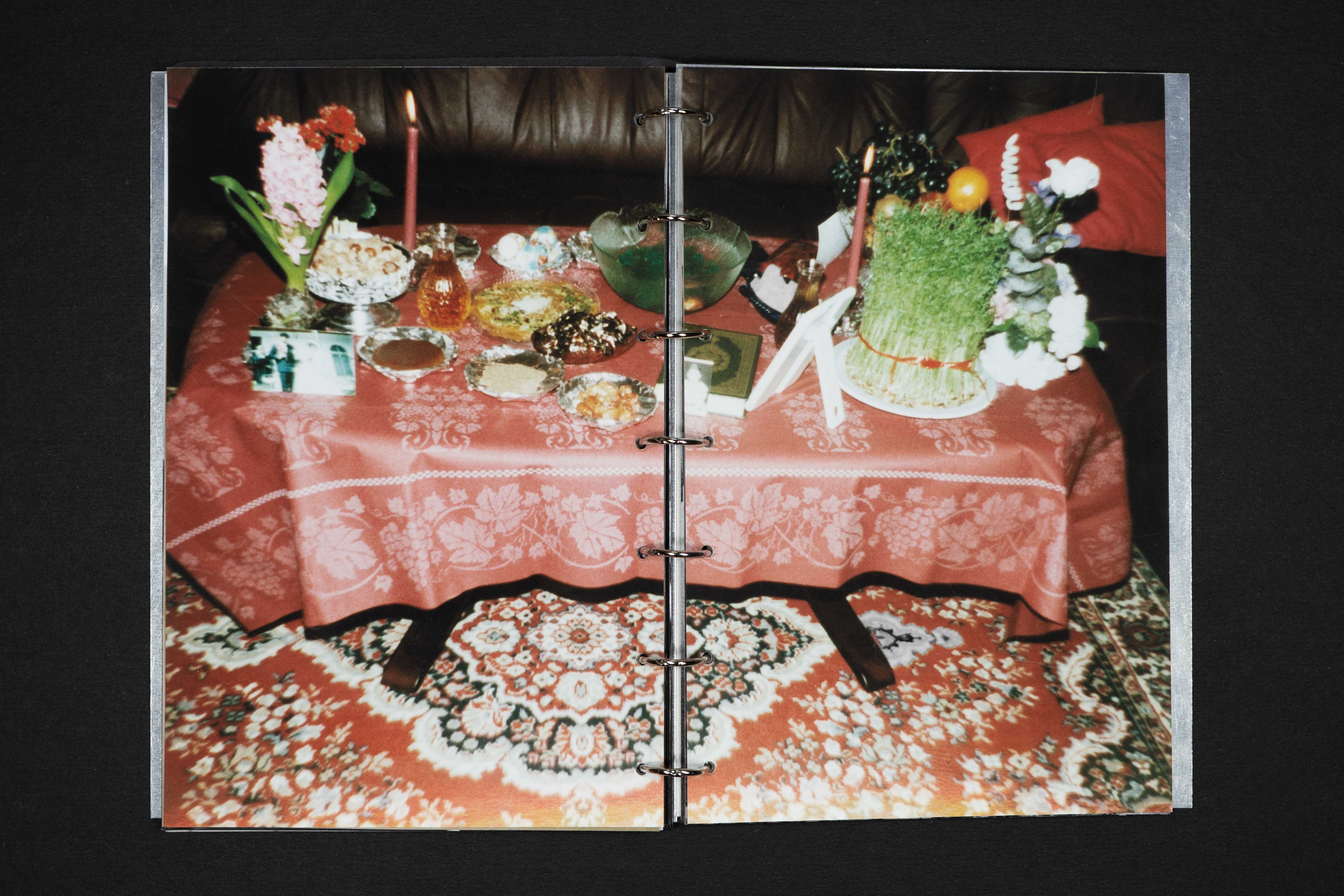
RÖK: What kind of atmosphere do you like to work in? Do you listen to something in particular? What does your studio environment look like?
GT: I'm studying at the moment, so we have studio space that we share with everyone who studies photography. But I never sit in my seat because I find it hard to sit among a lot of people who move around because it's so easy for me to get distracted. So I usually like to work kind of by myself. But not completely myself, I like to feel that I have someone that I can talk to when I need to. When I need to take a break or get some criticism about something, I like to know that I have someone close at hand. But if I’m working in an environment where other people are moving around, I still like to have brown noise or listen to soundtracks. Something without lyrics, but that still sets the mood so that I can keep some kind of focus. Otherwise, I enjoy working on my own and getting a bit stuck in my own head..but still being able to know that I can disturb someone if I need to [laughs].
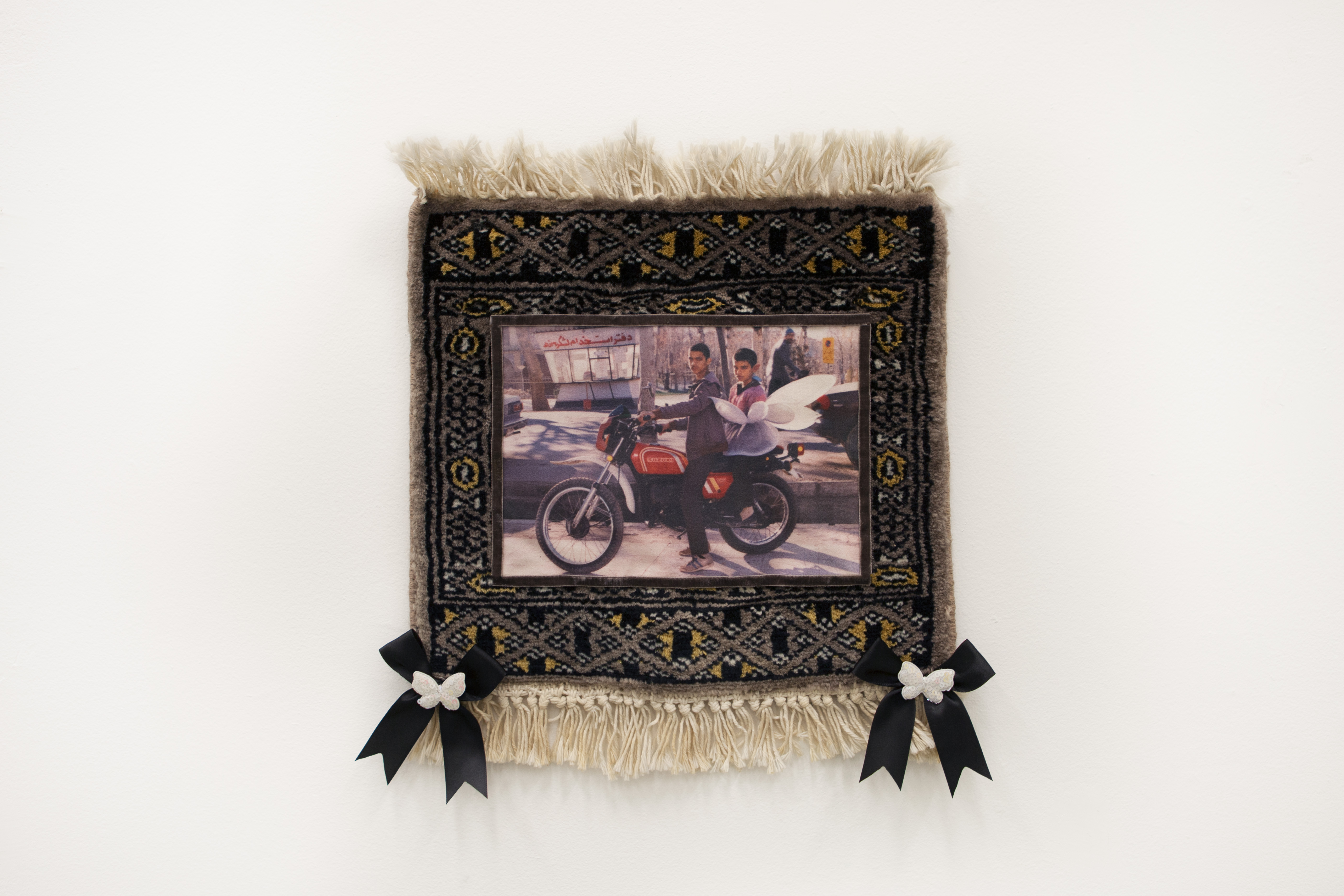
RÖK: Who are some influences that helped you develop the visual language for your work?
GT: I don't know if they have helped me in developing my visual language that much, but I've always looked up to Shirin Neshat, who is a photographer and artist. She does a lot of different things. And Farah Al Qasimi, who also works a lot with culture and identity. I also like Hassan Hajjaj very much. He tends to make his photographs three-dimensional, and he usually works quite commercially, photographing celebrities and stuff, but he's also done things that are more fine art. I saw his work when I was in Paris and it has been my dream to see his work, irl. My friend Miina Anahita who works very magical and dreamy, and whose practice moves very much in different worlds but through an incredible visual language, is also an inspiration.
RÖK: I can really see the relationship with Farah Al Qasimi in imagery and activation of the space outside the picture. Many of your projects have physical components in the form of, for example, installations (Will This Cake Save Our Marriage?, 2022) or additions of decorative details such as frames (Bet She Looks Like You, 2023). Could you talk a little bit about how to extend the physical presence of photography through material interventions and the interest in working in "3D" instead of the flatness that usually characterizes photography as a medium?
GT: I think studying photography for like 5 years makes you kind of hate photography. Everything really becomes photo, photo, photo... I don't mind a flat photo on a wall because I still think it's exciting with photography, but sometimes when you walk into a space... Especially now, when I was at the Paris Photo fair, there are so many photos everywhere, and it's like the value of it disappears a little bit when it's so boxed in a huge room. Then my attention is drawn to the photographs that have become kind of three-dimensional or where the artist has done something else instead of just framing it. In those spaces, it almost feels like it has to be an insane image for it to catch your attention if it's just in a regular frame. But I’ve also grown up in a home with so many maximalist embellishments in everything. I think that the physical components that I like to add to my works are usually jewellery or charms that come from the fact that my mother always worn jewellery and I always got things from her when I grew up. In one of the pieces, Pomegranates for Generations, 2023, I’ve added a necklace that I got from my mother. So, I like to add things with some connection to what I identify with instead of it just being like, "It would be nice to have a chain here," It's always linked to something else in relation to what kind of image you're looking at. I also just love being able to mix everything up and connect them together. Like the carpet projects that I'm doing now, stem from a thought I've had for a very long time that I want to combine those two elements. I also think that it’s generally more interesting to look at works that have several layers to them. But it also feels like a very stereotypical thing to say, that photography is just flat, that it's just commercial.

RÖK: Especially since photography is the medium people are closest to in some way, it's more accessible and forms a part of the world.
GT: But I think that's what makes it maybe disappear a little bit. We live in a culture where everyone can take photos, everyone can post something. And that in itself doesn't have to be a negative thing. It's great that people pick up photography as a new interest. But I think it also makes it easier for people to say things like "But I can also be a photographer," or "I can do this too" because you have access to it. Of course, not everyone has the eye to take a good picture, and I think the accessibility is not negative in itself, but I also think it's easier to feel that you can make a photo instead of creating, for example, a sculpture.
GT: But I think that's what makes it maybe disappear a little bit. We live in a culture where everyone can take photos, everyone can post something. And that in itself doesn't have to be a negative thing. It's great that people pick up photography as a new interest. But I think it also makes it easier for people to say things like "But I can also be a photographer," or "I can do this too" because you have access to it. Of course, not everyone has the eye to take a good picture, and I think the accessibility is not negative in itself, but I also think it's easier to feel that you can make a photo instead of creating, for example, a sculpture.
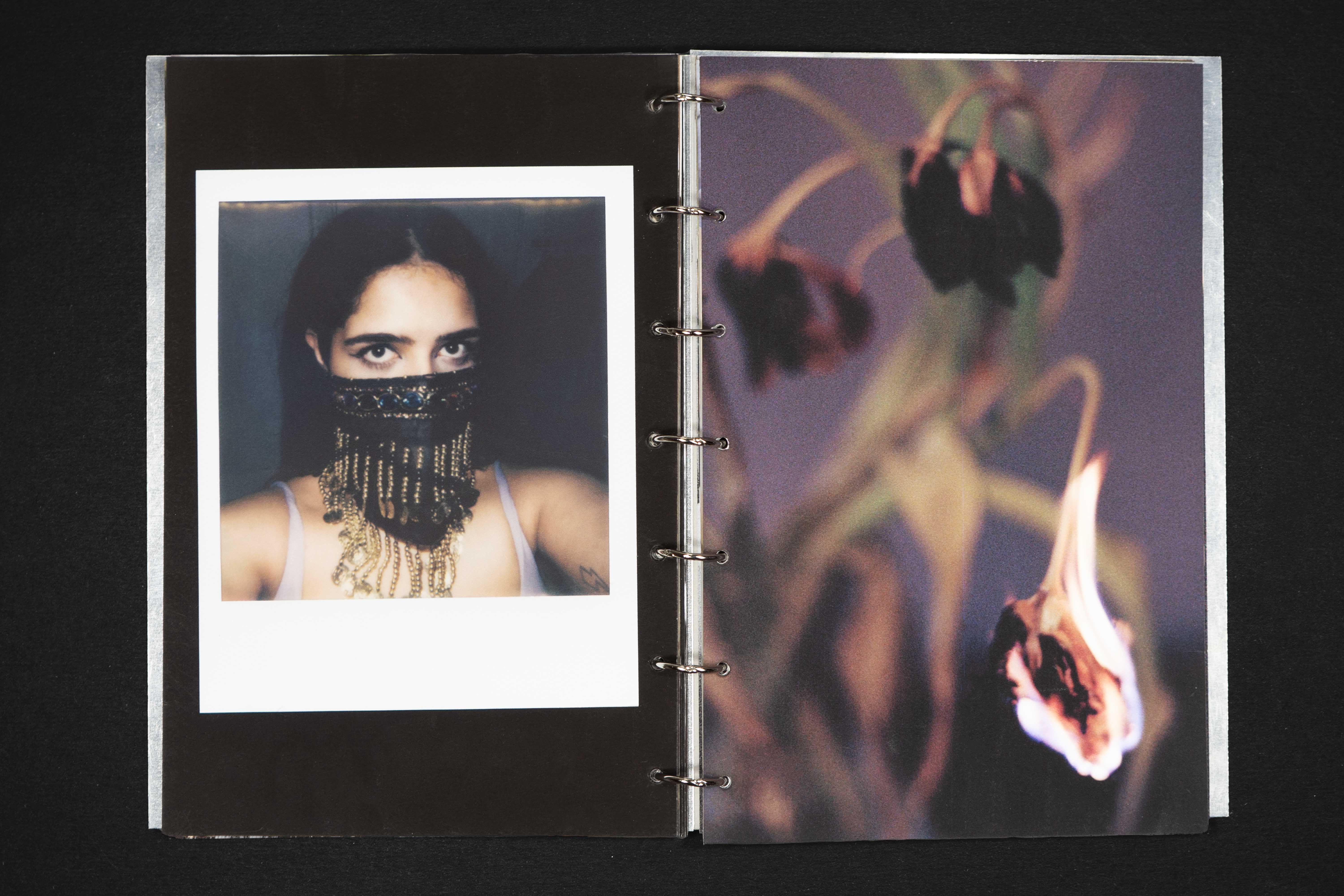
RÖK: True true. Which artists, writers, academics, or other creative thinkers have influenced your work?
GT: It always feels like I'm been inspired by everything, but also people around me. When I'm working, intuitively, I go very much on feelings because I'm very emotionally driven. But now I've also read a lot of Ariella Azoulay, and she talks about the civil contract that photography can have for society, which I think is very interesting. So I guess she's a more academic influence. But then I really like Marjane Satrapi and the Persepolis series that I was obsessed with when I was growing up. And that comes more of a place of things I could identify with... Have you seen Eternal Sunshine of the Spotless Mind? I love it. It always feels like I'm drawn back into that movie because of how it depicts memories, traumas, and the feeling of wanting to erase or replace something in order to forget about things... Hit the Road is also an extremely good movie that I saw recently... This is also the thing, I can really draw inspiration from everything. I can look at something that gets stuck in my head, and then I refer to it in the future. I also read a poetry book called Girls That Never Die, by Safia Elhillo, which also triggered something in my head... So I really take inspiration from everything. Last year I also made a photo book called Soghati, whose title comes from a song by the Persian artist Hayedeh, whom I grew up with. So I always think I'm drawing references to things that I enjoy, or things that I identify with in my work to connect it in some way.
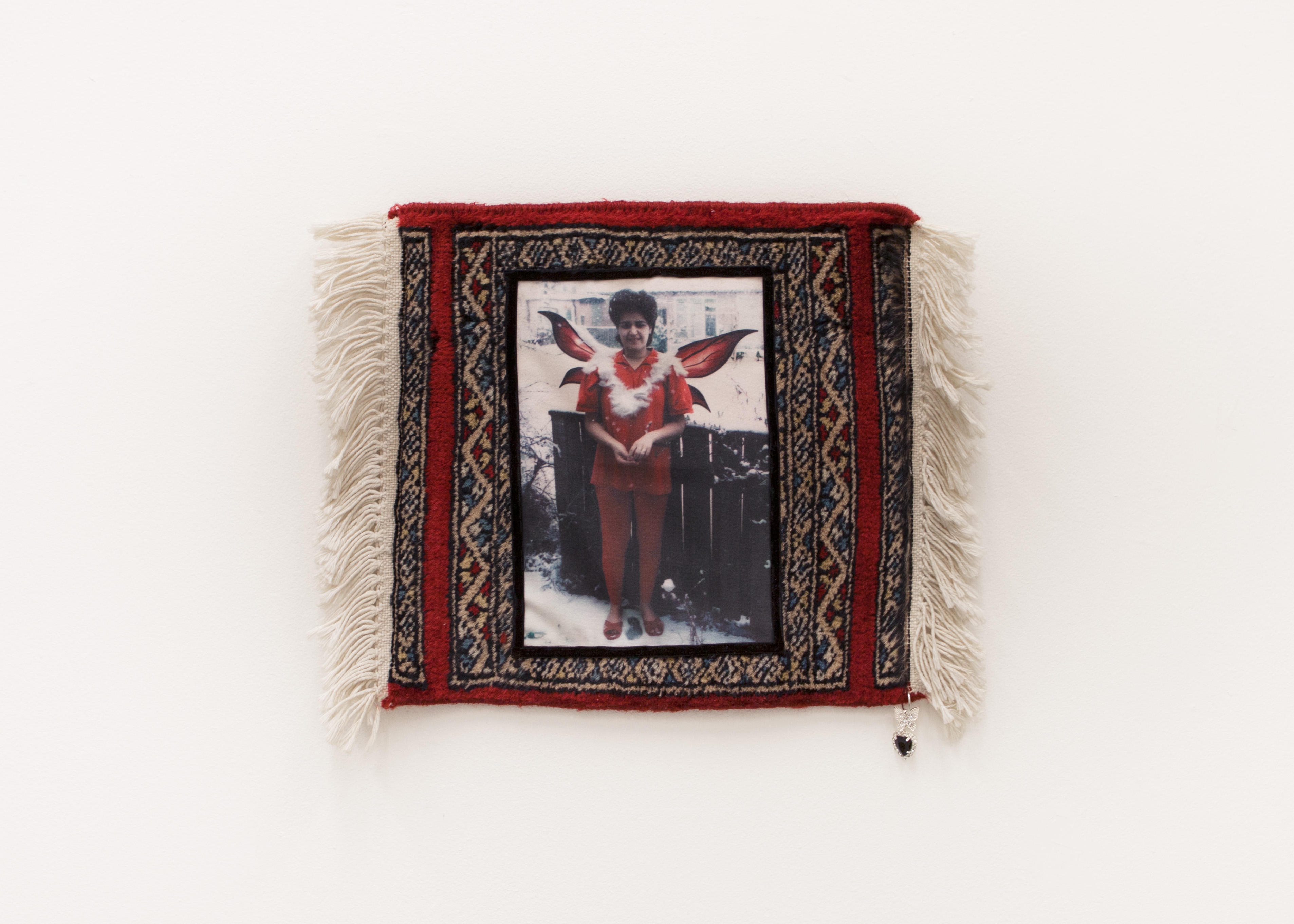
RÖK: It's so interesting to see how different the inspiration is because sometimes you can see direct references in people's work but sometimes it's stuff you never thought about.
GT: It's fun because it seems so obvious to me, but then when I work with Persian culture, I also notice that it's important that I put it into words or explain it because people who don't share that culture are not familiar with it. But then I can also think that it's fun to share, like “This is what I connect to this,” or “This is what I grew up with,” for someone who can't identify with it. But then sometimes I also don't want to explain everything, so it's a tough decision.

RÖK: You talked a little bit about the importance of memories in relation to Eternal Sunshine of the Spotless Mind, and when I look at your work, I think a lot about memory and how memories can be very localized in specific objects, places, and sensory stimulation (for example, your use of everyday objects), but also how memories are an immaterial concept that constantly reshapes itself into new social and physical environments and different shared and individual histories (such as your activation of the archive through digital editing). Could you talk a little bit about the importance of memory and memory creation in your work?
GT: By using everyday objects, I think I aim to create a visual narrative that is more rooted in concrete elements. My artistic work, or just pretty much everything I do, I want to serve as a platform for dialogue about how we form memories and how to render the notion of individual and collective stories. Or just how you can take a memory that exists, but that you may not have a close relationship to, like when I use archival images of my mother or from events in Iran where I’ve been present, and kind of manipulate myself into that context. Or just create a whole new world from the material that already exists. Instead of maybe having a desire to create new memories, I also like to get stuck in what has already been. And there are both advantages and disadvantages to getting stuck in the past. I think I've always had that problem in general as well in that I feel very nostalgic in looking at what has already been. Both when it comes to my own life, but also and the lives of others, to look up historically how things looked before, or how people dressed before. To always get a little caught up in the past. But I've really been obsessed with memories. I don't know if it's because of attachment issues [laughs] or that it becomes comfortable to live in what has been. I remember my friend said to me at some point, "The art of letting go has never been your thing." And, like, I got so butthurt from it at first, but then I realized that I can kind of make it into my advantage. I can work with it instead of seeing it as just something negative. I think it’s through this that I can now put all these memories into a new context and be in control rather than just having all the material and dwelling on it or feeling confused and not really knowing how to approach it. So I think it's a way for me to move forward with things, to see a start and see an end.
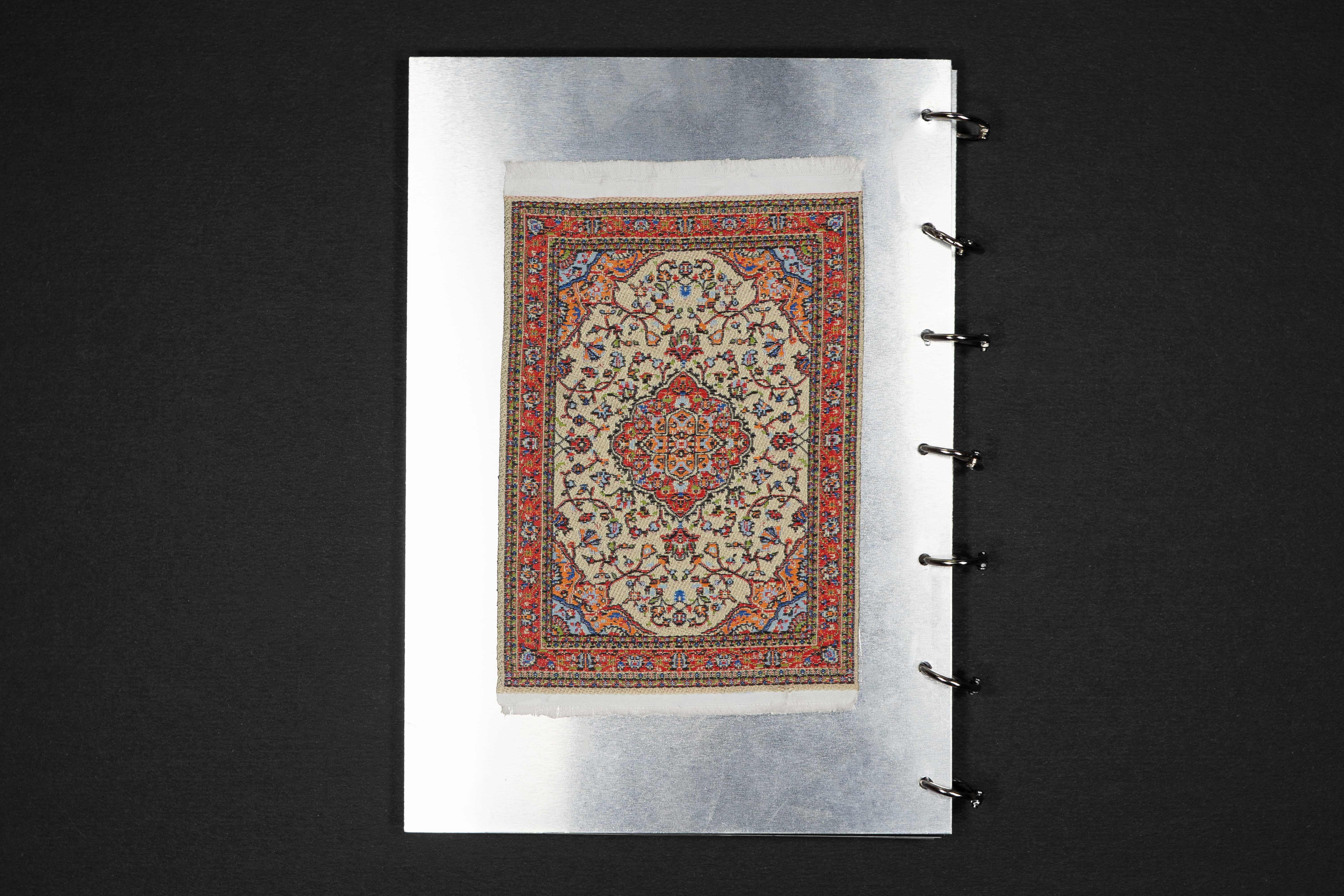
RÖK: True, it's very much an active process.
GT: Yes, I also think it's a lot of fun that you can manipulate things and really create something that's based on your own imagination. It's something that I find very exciting when I do it myself but also when others do it. How the brain can really go to 100 different places...
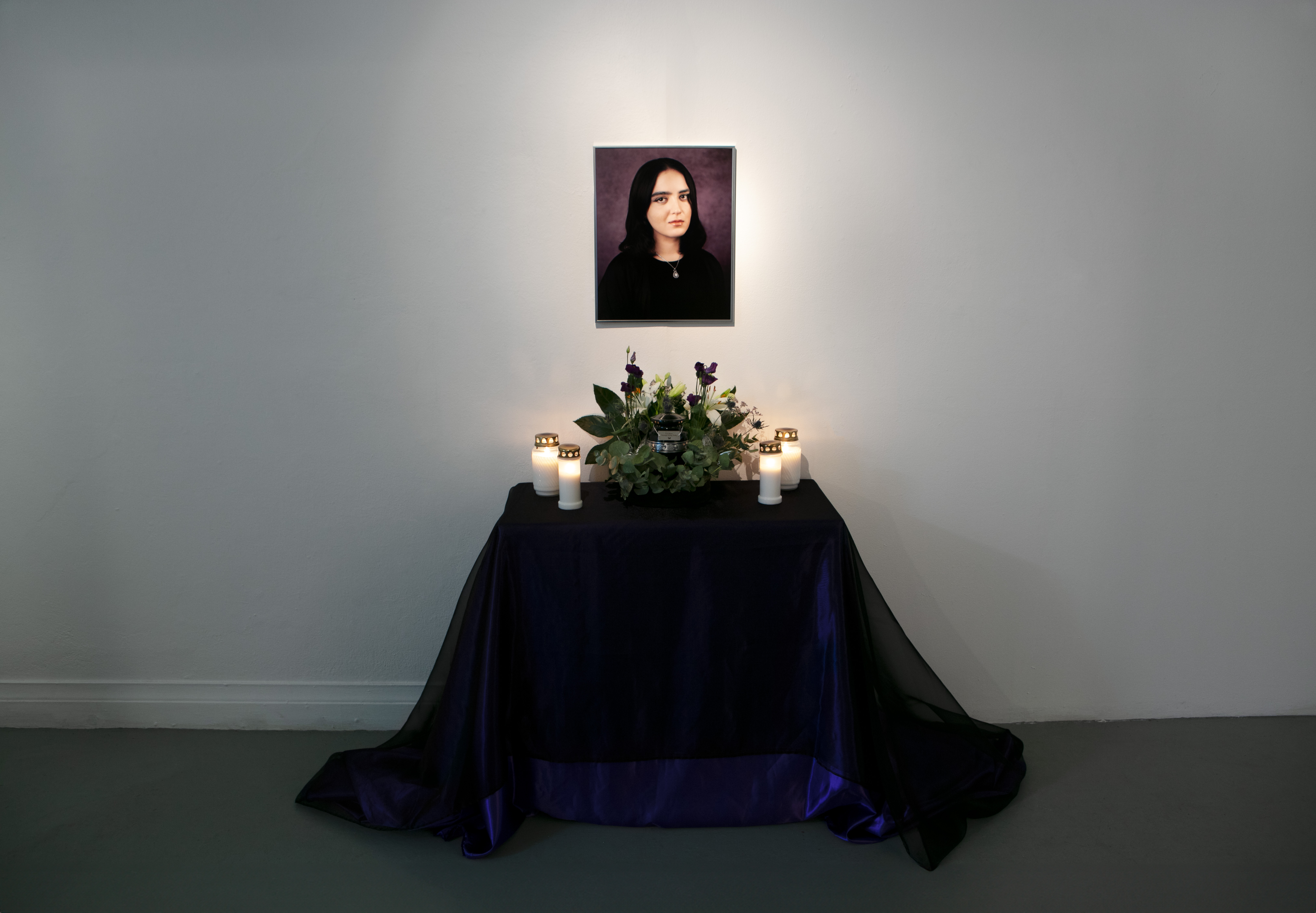
RÖK: What are you working on right now?
GT: Since I'm in my last year, we're going to have a graduation exhibition at Röda Sten in Gothenburg next spring. In 2 weeks [at the time of the interview in November] we have our work-in-progress exhibition at Valand. Currently I'm working on staging my funeral. The work is about moving on and letting go and I wanted to make it really dramatic and ironic by orchestrating my own funeral. So that's what I'm doing now, but we'll see what project I will exhibit at the graduation exhibition.
GT: Since I'm in my last year, we're going to have a graduation exhibition at Röda Sten in Gothenburg next spring. In 2 weeks [at the time of the interview in November] we have our work-in-progress exhibition at Valand. Currently I'm working on staging my funeral. The work is about moving on and letting go and I wanted to make it really dramatic and ironic by orchestrating my own funeral. So that's what I'm doing now, but we'll see what project I will exhibit at the graduation exhibition.